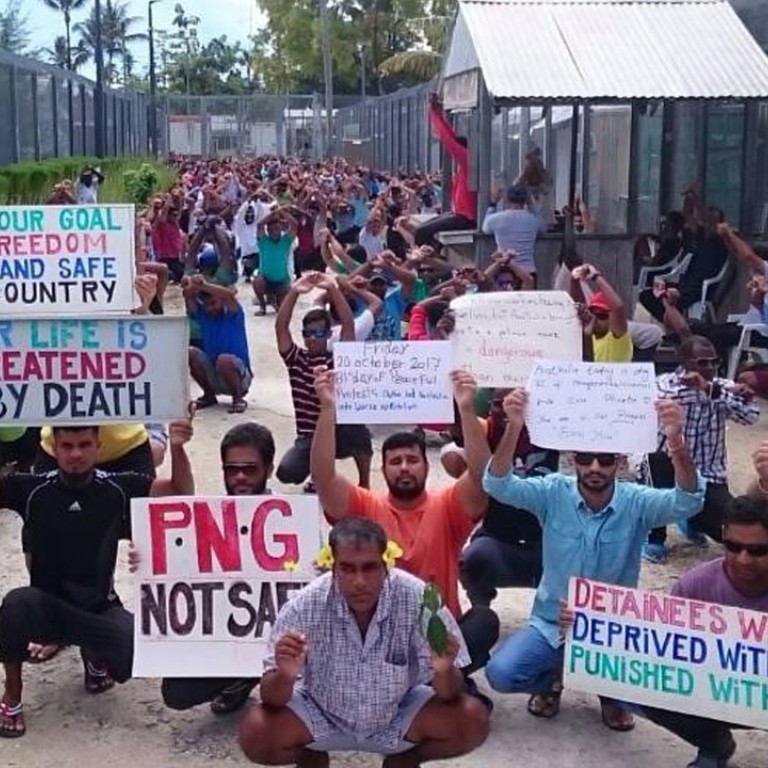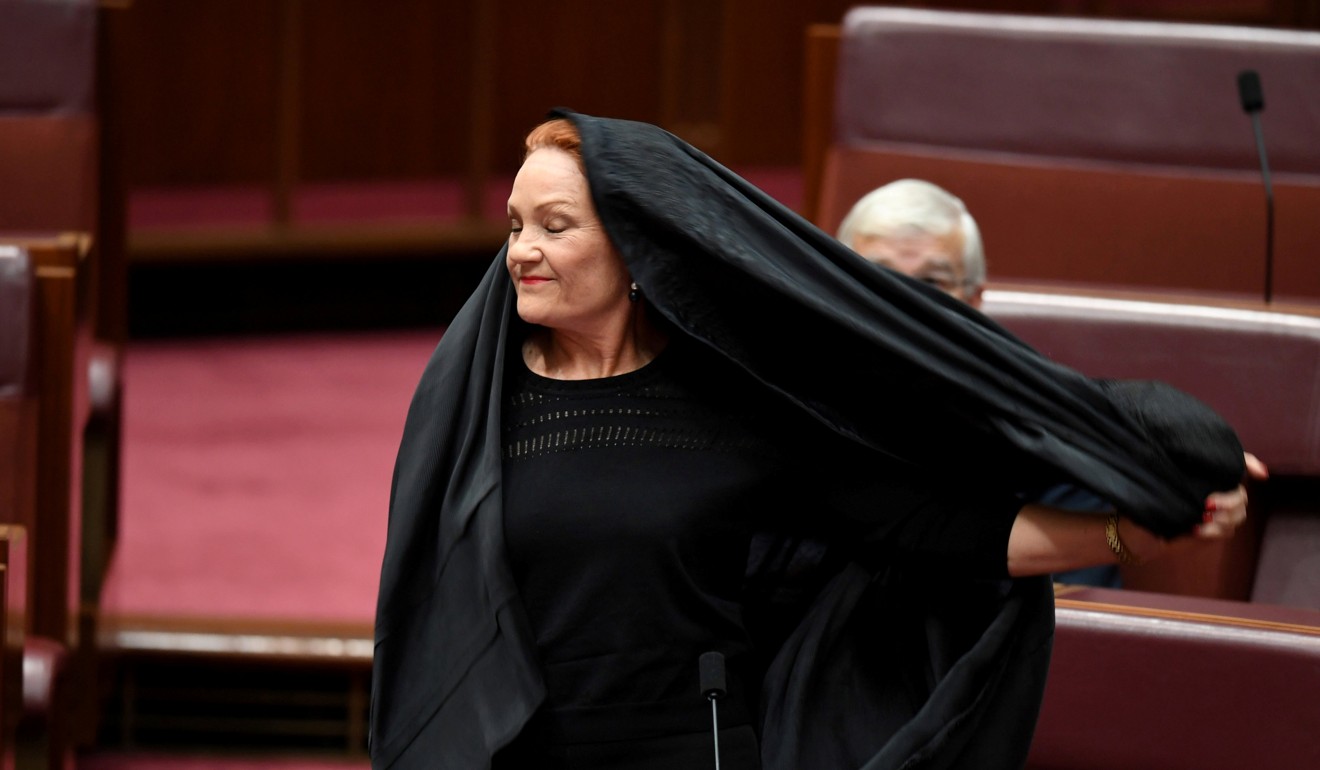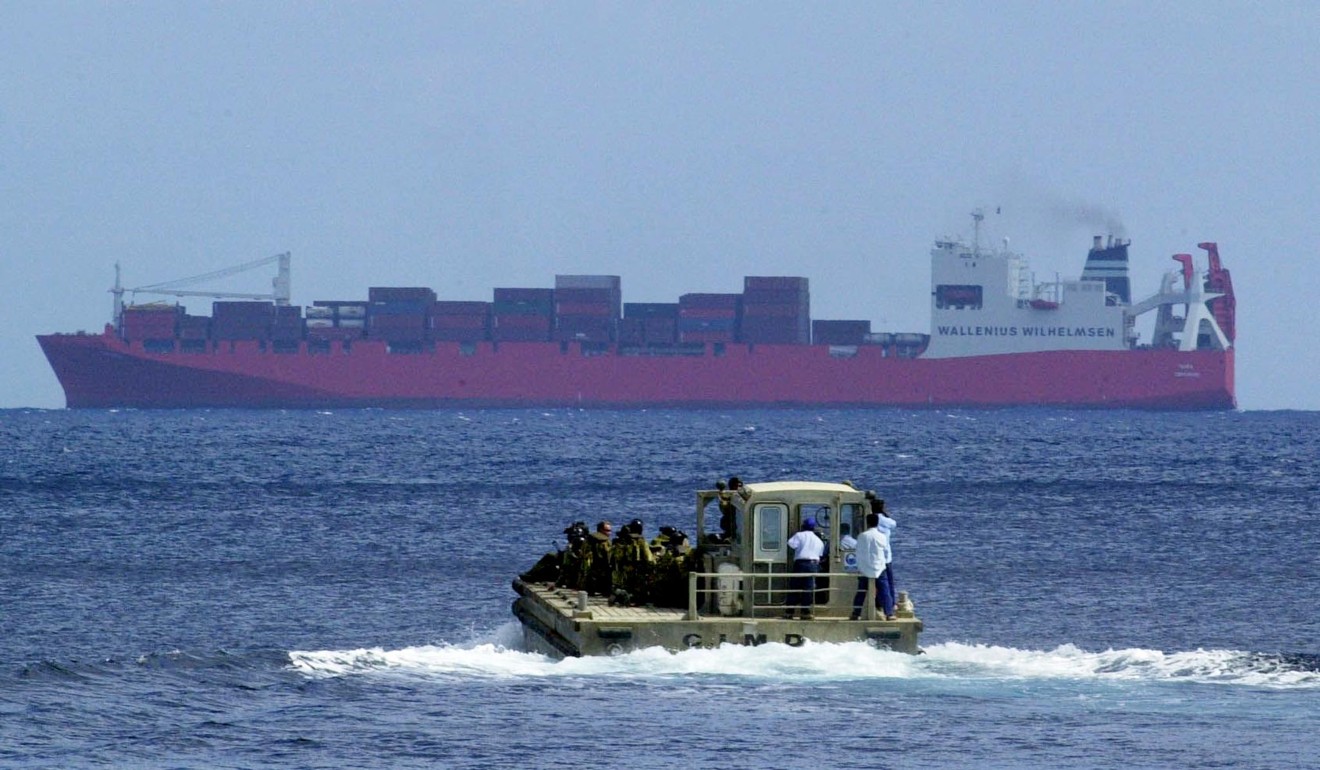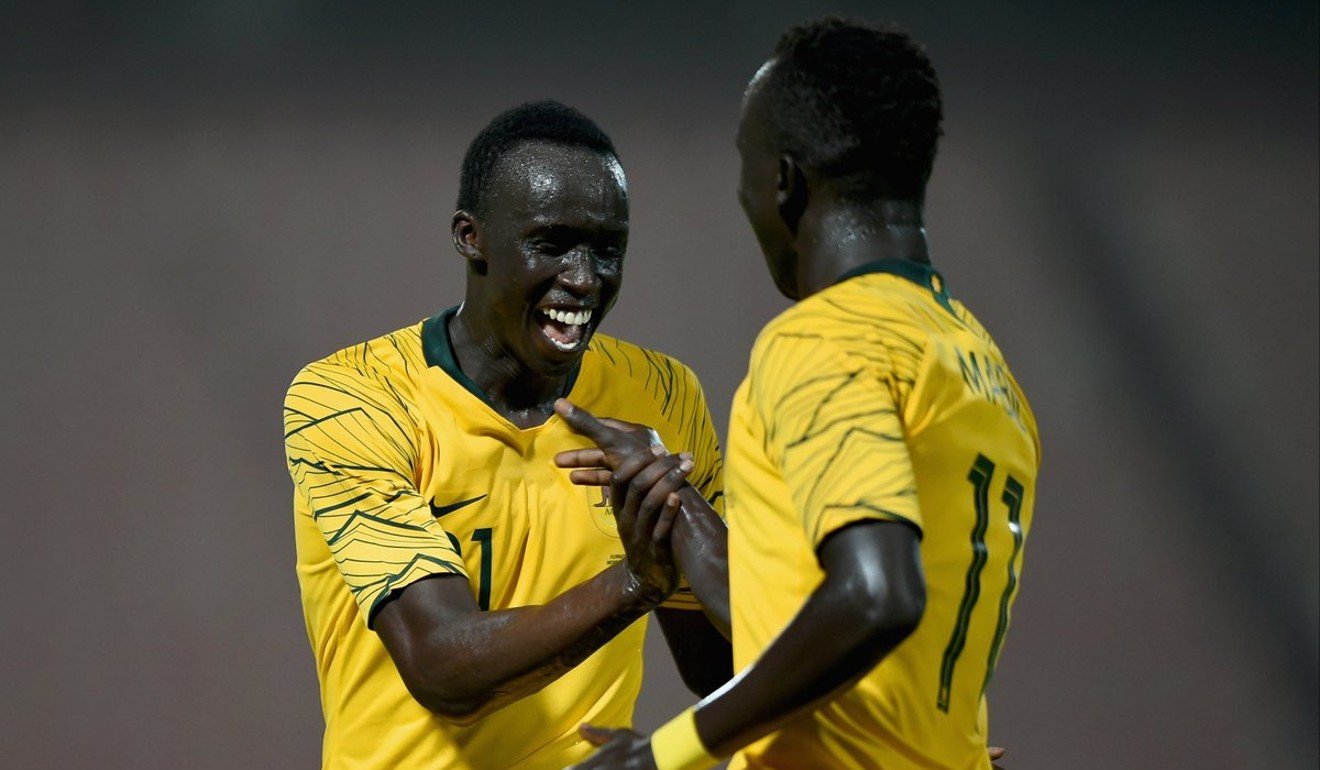
Is Australia really that racist?
- Here are some clues: the PM brags about blocking refugees while the senate mulls whether it’s ‘okay to be white’. Still wondering? A penchant for blackface and talk of a ‘final solution’ might give the answer away
Is Australia really that racist? Yes, it is – and it’s important to get that out of the way first. When it comes to discussions of Australia’s chronic inadequacy in dealing with matters of race and immigration, there is a tendency to drift toward the sort of avuncular exasperation best deployed at rain-haunted barbecues and crotchety grandparents. It’s somewhere between flat-out denial and a much-needed coping mechanism for weeks such as this one, when the Australian Senate actually voted on a motion condemning “anti-white racism”, which included the phrase “it is okay to be white”.
The motion was the brainchild of One Nation senator Pauline Hanson, who rose to political prominence in the 1990s on the back of a campaign railing against immigration from Asia. Equally adept with dog-whistle and megaphone, she’s since erased mention of Asia from her rhetoric and neatly replaced it with all things Muslim, riding a wave of Islamophobia all the way back to the senate in 2016.
Why is racism so big in Japan?
Australia’s ruling Liberal-National Coalition initially backed Hanson’s motion, only to claim this was the result of an “administrative error” and perform a whiplash-inducing reversal when faced with a bewildered, upset response from the public. It didn’t pass, but this is where we are now – listening to the clarion call of the privileged, who don’t seem to realise their privilege is embodied by the very fact they possess a clarion in the first place.
Apart from the well-documented racist origins of “it is okay to be white” – a slogan bandied about by white supremacists for decades – there’s nothing terribly controversial about it, really. It is, in fact, a masterpiece of understatement. It has certainly been very good to be white in Australia, a colonial outpost upon which white settlers arrived in 1788 armed with the concept of terra nullius, or “nobody’s land” – which remains a source of great pain and confusion for the country’s Aboriginal population, which has been there for more than 50,000 years. There is still no treaty between Aboriginal people and the Australian government, no nod in the direction of reparations for centuries of theft and abuse.

It was only in 1973 that Australia removed the last vestiges of its White Australia policy, which is exactly what it sounds like: a barbaric bouquet of legislation designed to prevent those of a certain hue from ever reaching its shores. Australia takes many of its geopolitical cues from the United States, and it would appear some social ones as well – it is the enduring tragedy of immigrant nations to perpetuate cycles of violence and intolerance upon each fresh wave of immigration.
The bizarre part in all this is that the modern permeability of borders is a huge part of Australian identity. According to the most recent census, 49 per cent of Australians were born overseas, or have at least one parent born overseas. There is so much opportunity to be gained from this, so much agility. And yet the country keeps stumbling over basic measures of equality, particularly when it comes to that most disenfranchised group of people: refugees.
Dumplings, tai chi and a hint of racism: a Chinatown takes root in Tokyo
In August 2001, a Norwegian ship called the Tampa rescued more than 400 refugees, most of them fleeing Afghanistan. Dangerously over capacity, and with the refugees in dire need of aid and supplies, the Tampa asked for permission to enter Australian waters. The government responded by sending commandos aboard, going on to politicise asylum seekers in every subsequent election, and implementing a policy that sees people fleeing persecution interned in offshore camps before they ever touch Australian soil.
They’re still in existence, these offshore detention centres, keeping human beings in the agony of limbo in locations such as the tiny island nation of Nauru. Mental illness and incidences of self-harm are rampant, and conditions are poor. The United Nations has repeatedly slammed the camps’ existence; the body has called for Australia to evacuate them, citing everything from an unfolding health crisis to breaches of international human rights law.

Médecins Sans Frontières says the mental health condition of those in the camps is “beyond desperate”. But they play too well to certain sections of the electorate, those sections living in fear that a flood of refugees will overrun their lives, their jobs, their identity. They play so well that the policies keeping them open are backed by both Australia’s major political parties, Labor and the Coalition. It is insecurity metastasised into intolerance, and it is a national shame.
But in Australia, where too many things come back to race, not all refugees are created equal. In March, then-home affairs minister Peter Dutton found it in his heart to identify some deserving of “special attention” – white South African farmers, naturally. And Dutton, in his previous portfolio, repeatedly blocked interned asylum seekers from seeking medical and maternal care in Australia, but saw fit to intervene in the cases of two European au pairs – domestic helpers, had they come from anywhere else – seeking employment in Australia.
Australia’s new prime minister, Scott Morrison, was deeply involved in the creation of these harsh border policies. On his desk, there is a hunk of metal in the shape of a fishing boat, bearing three words: “I stopped these.” It was hard to believe when the news first broke; never mind bad taste, it looked like bad Photoshop. Since the Tampa, to “stop the boats” has been somewhere between a mantra and a mission statement for some Australian politicians. Now the country’s leader maintains a trophy celebrating the ways he prevented human beings from legally seeking safety and shelter.

This year, the state of Victoria has been in furious disagreement with the federal government, which insists “gangs” of African teenagers are running riot in the streets of Melbourne. This is all too easily conflated with immigration, with the corrosive and carefully curated notion that tighter borders will prevent crimes committed by people who aren’t white and should never have been let into the country. In typically reasonable and measured coverage, tabloids owned by Rupert Murdoch dubbed Victoria “a state of fear”; meanwhile, the latest official statistics show reports of crime are at their lowest level in three years, and the criminal incident rate has fallen 7.8 per cent from last year.
Racist landlords in Malaysia to Chinese privilege in Singapore
The irony, the hypocrisy, is too much to list in detail. We haven’t even covered Australia’s penchant for blackface; the way the Muslim author and activist Yassmin Abdel-Magied was hounded and harassed by right-leaning commentators and politicians for daring to question Australia’s military campaigns overseas; the racist depiction of Serena Williams by an Australian cartoonist that sparked international outrage; and, in August, senator Fraser Anning’s use of the term “the final solution” in a failed bid to end immigration from Muslims and non-English-speaking people “from the third world”. Australia has a serious problem with race and immigration, and it’s a disease that has been around for too long.
Still, there are weeds of hope growing between the cracks. This week, two childhood friends whose families sought refuge from the conflict in Sudan made their debuts together for Australia’s national soccer team. Thomas Deng, 21, and Awer Mabil, 23, are a pair of refugees lionised in that modern Australian cathedral, the stadium, where they were publicly anointed as being of utility to society.
How brilliant, for these brilliant young athletes. How sad for the rest of us, that we are so narrow in the ways we ask those whom we do not yet know to prove their value, that we require sporting spectacle to confer humanity upon another person – as if simply being human were not enough.
Hari Raj is a production editor at the Post

